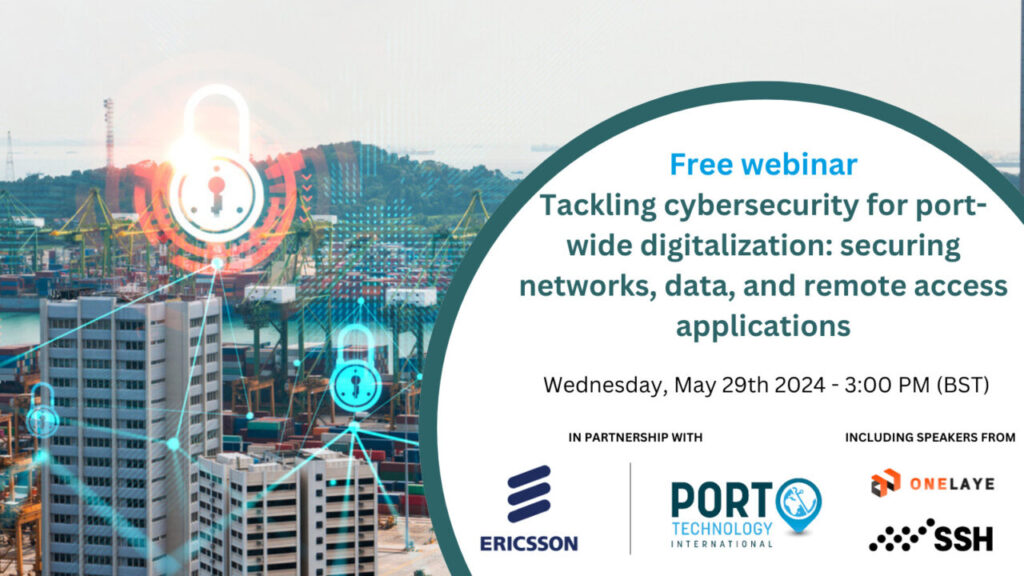For modern port facilities, times are changing and so is the way of doing business. Concerns such as increasing safety and security, reducing operational expenditures and improving environmental practices are registering high on the list of business priorities.
Today, viability for ports means keeping step with public and political demands for improved security and greener operational practices, while taking into account realities such as aggressive budget structures and the growing price of commodities such as oil.
Port agencies are relying on innovative thinking and advanced business practices to remain vibrant. Some of the largest port facilities are incorporating alternatives such as renewable energy resources and innovative technology to help them stay viable. From the Port Authorities of New York and New Jersey to Forth Ports PLC, one of the largest port operators in the UK, advanced eco-friendly practices are factoring heavily into the way modern ports do business [1].
As one of the most rapidly advancing renewable energy resources in the world, solar energy is gaining attention for its reliability and flexibility in application. Operating free of the electrical grid and requiring little maintenance, solar technology can present port agencies with an attractive alternative for improving operations while enabling compliance with green mandates and budget restrictions.
The need for safety and security
As any agency knows, one of the most prevalent concerns in modern port operations is the need for vigilant safety and security measures. With the introduction of the International Ship and Port Facility Security (ISPS) code in 2004, security has become a growing focus for the international shipping industry. With over 356,000 km of coastlines, port facilities are of particular concern because the land-based nature of port operations provides a significant potential for acts of terrorism and security breaches. Physical security measures are a key component in reducing a port’s vulnerability to attack and ensuring compliance with international regulations. Among the simplest yet most important security measures is the effective illumination of all areas within the port, including outdoor facilities, perimeters and work areas. While illumination may sound like an easy task to accomplish, factors such as remote areas, difficult locations and cost concerns can make installing lighting for increased port secur ity a challenging endeavour.
Limited access to the electrical grid can mean that illumination is simply not an option for remote or challenging areas such as docks and jetties. In addition, costly digging and trenching to access the electrical grid can create significant installation costs and generate a loss in revenue for the time that business is affected by the installation.
Here solar energy can be an agency’s most valuable asset. By implementing solar-powered area lighting technology agencies can overcome the difficulties associated with remote and challenging locations while significantly reducing installation time and costs. As a limitless energy resource, solar energy is immune from electrical grid failures, and can provide ongoing cost savings by eliminating electrical bills.
Solar LED technology – the evolution of lighting
Solar LED area lighting marries the benefits of solar technology with the advanced technology found in light emitting diodes (LED). On the cutting edge of illumination trends, LEDs are gaining unprecedented attention for their low power draw, extreme reliability and bright illumination.
LED technology has been used extensively for a variety of marine applications, most notably lighting aids-to-navigation. Shock and vibration resistant, and able to withstand extreme temperatures, LEDs have proven their value in marine applications that require resilient illumination. With an operating life of up to 50,000 hours, LEDs require no bulb changes, which results in decreased maintenance schedules and improved reliability of important lighting applications.
Beyond their extreme reliability, LEDs offer several operational benefits over traditional lighting options. LED illumination allows for lighting to be intelligently programmed, offering the ability to configure area lighting to shine brightest during times of greatest need (e.g. times of high traffic volume). LEDs also allow for full cut-off optics, providing a focused output that can reduce or eliminate unnecessary light pollution.
As a natural partner for solar energy, LEDs require very little power to operate. This efficiency allows for the optimisation of solar energy systems and enables solar area lighting products to offer remarkably bright and reliable illumination. While the independent nature of solar energy naturally ensures that lighting will function regardless of electrical or generator failures, advanced solar LED technology factors in components that take operational efficiency and reliability one step further.
Solar technology is at its most efficient and reliable when it incorporates an energy management system (EMS) into its components. By dynamically adjusting light output to match the level of solar charging available, an EMS allows solar systems to function intelligently. The ability to adjust to environmental conditions ensures that energy is conserved appropriately during times of low solar charging such as low light and winter conditions. By using energy efficiently and conserving energy as necessary, an EMS ensures consistent area lighting output at all times of year and under all types of environmental conditions.
Leading-edge solar area lighting technology, such as that developed by Carmanah Technologies Corporation, incorporates renewable solar energy, advanced LED technology and intelligent EMS components into one of the most reliable and cost-effective illumination solutions a port can implement. In addition to the practical benefits of this versatile technology is the considerable advantage of implementing a renewable energy alternative.



